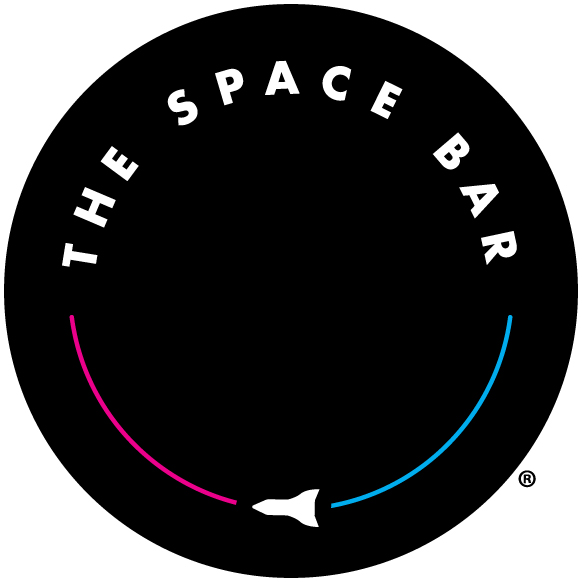I recently had the opportunity to watch two rocket launches from The Space Bar at the Courtyard by Marriott hotel in Titusville, Florida. This review covers the rocket launch photography aspect from this location.
Launch Sites and Landing Zones
Here are the areas which are visible from The Space Bar and their distances:
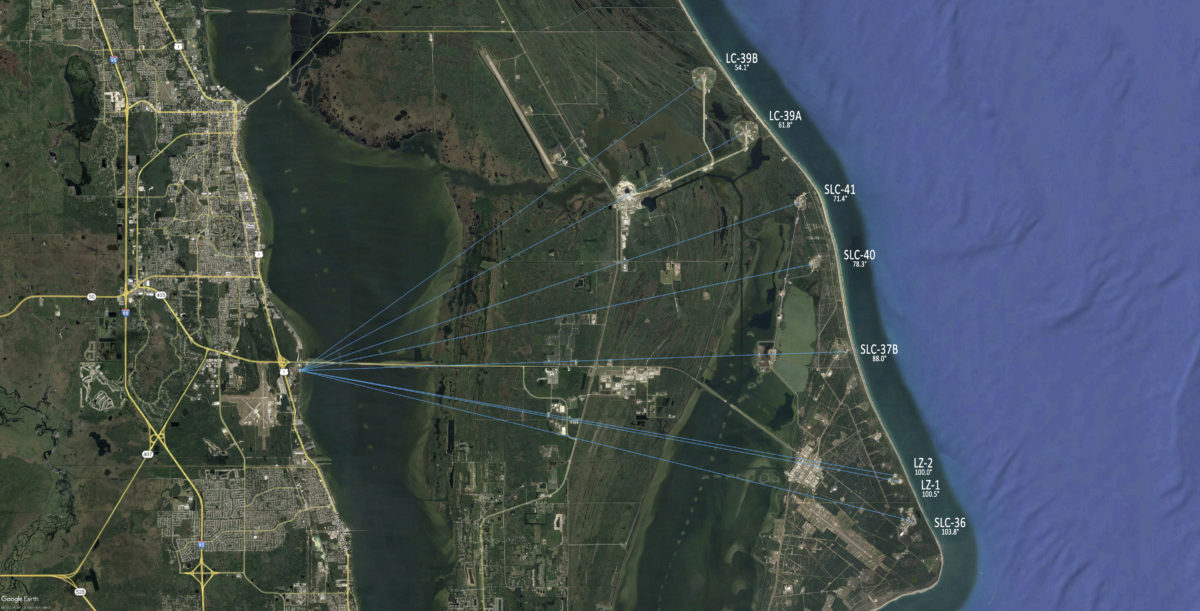
LC-39B @ 12.0 miles
Launch site for the Space Launch System (SLS).
LC-39A @ 12.2 miles
Launch site for SpaceX Falcon 9 and Falcon Heavy rockets. This site is capable of supporting SpaceX crewed missions. SpaceX is also building a launch pad at this location for the Starship. Unfortunately these pads are blocked from view by the Vehicle Assembly Building. The rockets will become visible above the VAB just a few seconds after liftoff.
SLC-41 @ 12.8 miles
Launch site for United Launch Alliance (ULA) Atlas V rockets. This site is capable of supporting Boeing Starliner crewed missions. It will also be used for the new Vulcan rocket.
SLC-40 @ 12.7 miles
Launch site used for SpaceX Falcon 9 rockets.
SLC-37B @ 13.2 miles
Launch site used for ULA Delta IV rockets.
LZ-2 @ 14.6 miles
This is the secondary landing zone used by SpaceX to recover Falcon 9 and Falcon Heavy boosters. The view to this site may be blocked by one of the Blue Origin Tank Cleaning and Test facilities once construction is complete.
LZ-1 @ 14.8 miles
This is the primary landing zone used by SpaceX to recover Falcon 9 and Falcon Heavy boosters.
SLC-36 @ 15.3 miles
Launch site used for the Blue Origin New Glenn rocket.
The Hotel
This facility is a 152-room 3-star hotel which opened to the public in April 2022. Standard rooms face west and offer views of the Space Coast Regional Airport. Waterside rooms face east and offer views of Kennedy Space Center and Cape Canaveral Space Force Station.
If you stay in one of the waterside rooms you will be able to watch a rocket launch from your room. Each waterside room has a pair of 8x binoculars to aid in watching a launch. There are some caveats though when photographing from the rooms. Some of the rooms have obstructions blocking the views of the launch sites (once a rockets clears these obstructions the rest of the ascent will be unobstructed). The view of LC-39A is obstructed from all rooms by the Vehicle Assembly Building. Electric lines may pose a problem for all rooms. The room I stayed in (427) had a partially obstructed view of SLC-41 because of a tree. Lower floor rooms may have large portions of the horizon blocked by trees. The construction cranes from a new bridge being built on the NASA causeway may obstruct views of SLC-40 from certain rooms. And finally, photographing through a window presents its own challenges with clarity and a blue color cast.

The Space Bar
Located on the roof of the hotel, The Space Bar has a large observation area that has the capacity for nearly 300 people. Although access is available to anyone, hotel guests receive priority if capacity becomes an issue during a launch.

From here you have unobstructed views to nearly every launch site with the big exception being LC-39A which is obstructed by the Vehicle Assembly Building. Construction cranes from a new bridge being built on the NASA causeway obstructs the view of SLC-40 from certain positions (once construction is complete this will no longer be a problem). And it appears the construction of a new Tank Cleaning and Testing building at the Blue Origin facility may obstruct landing views of LZ-2, although the more often used LZ-1 appears to be in the clear (minus the trees on the horizon).

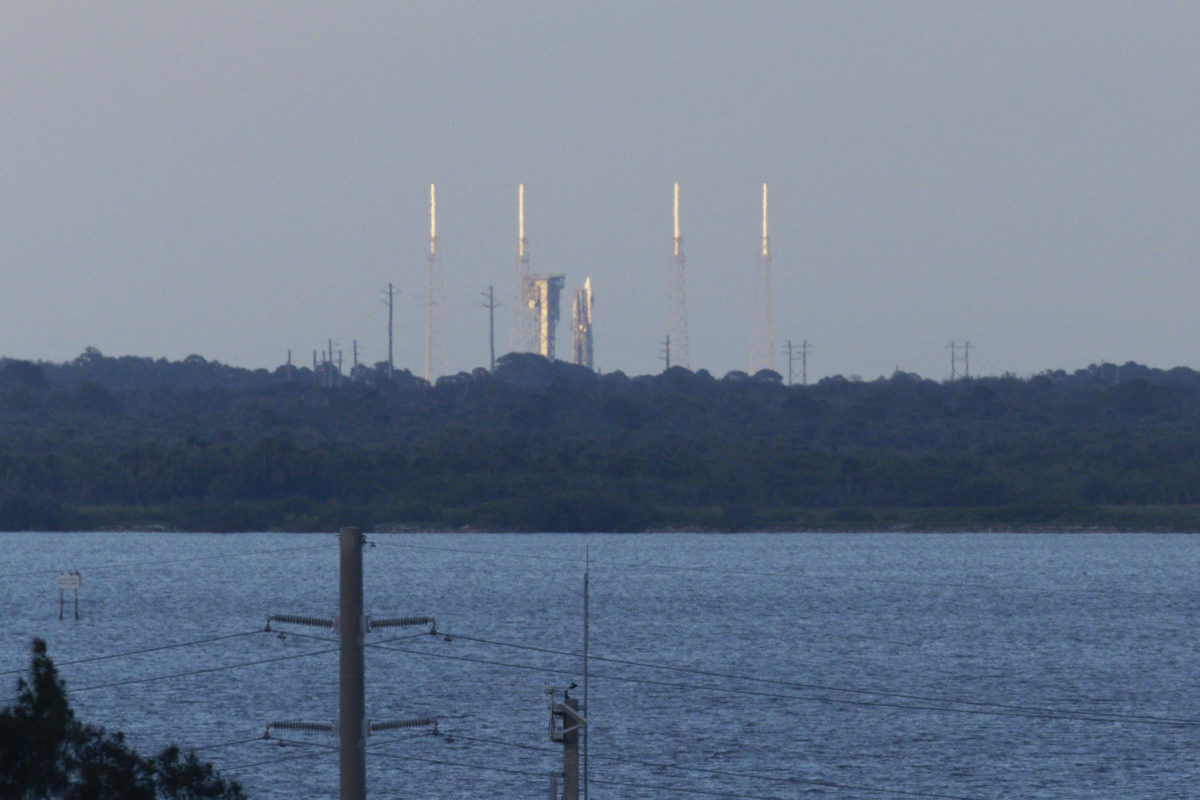
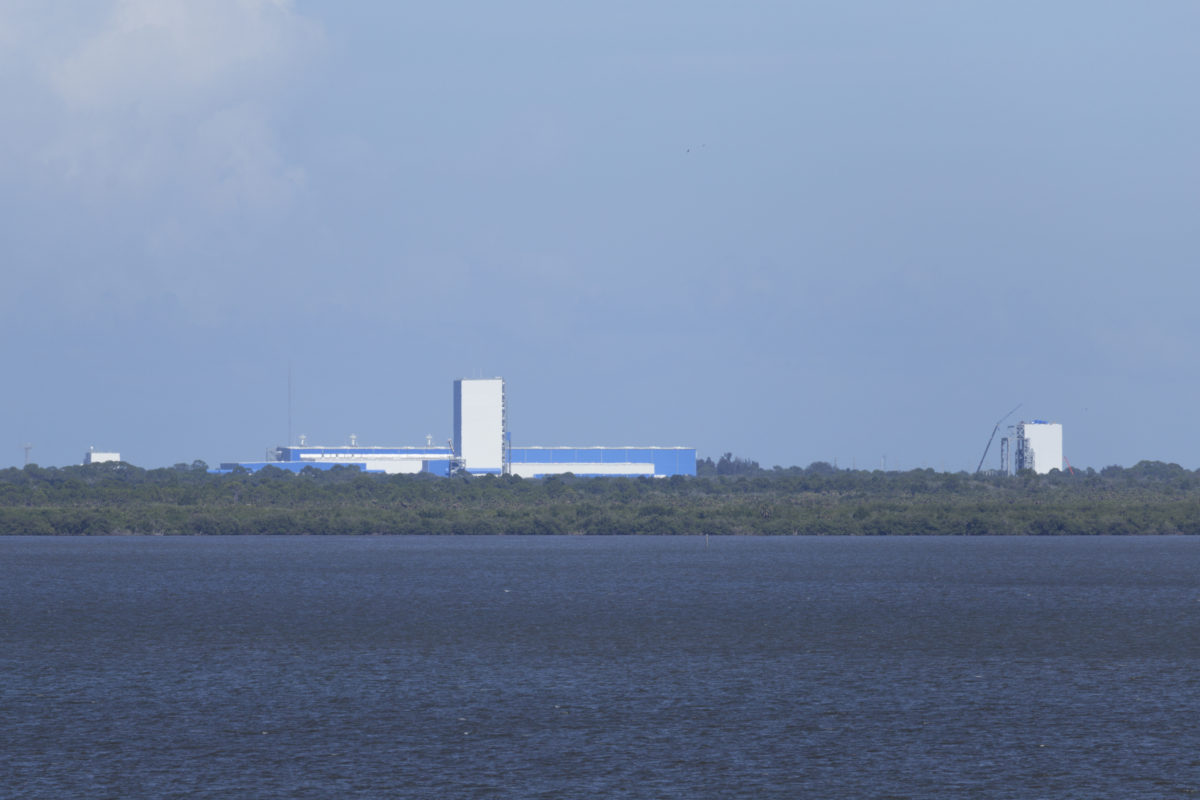
Liftoff of a Falcon 9 rocket from SLC-40 carrying the Korean Pathfinder Lunar Orbiter | Canon HF G50 and 600mm lens
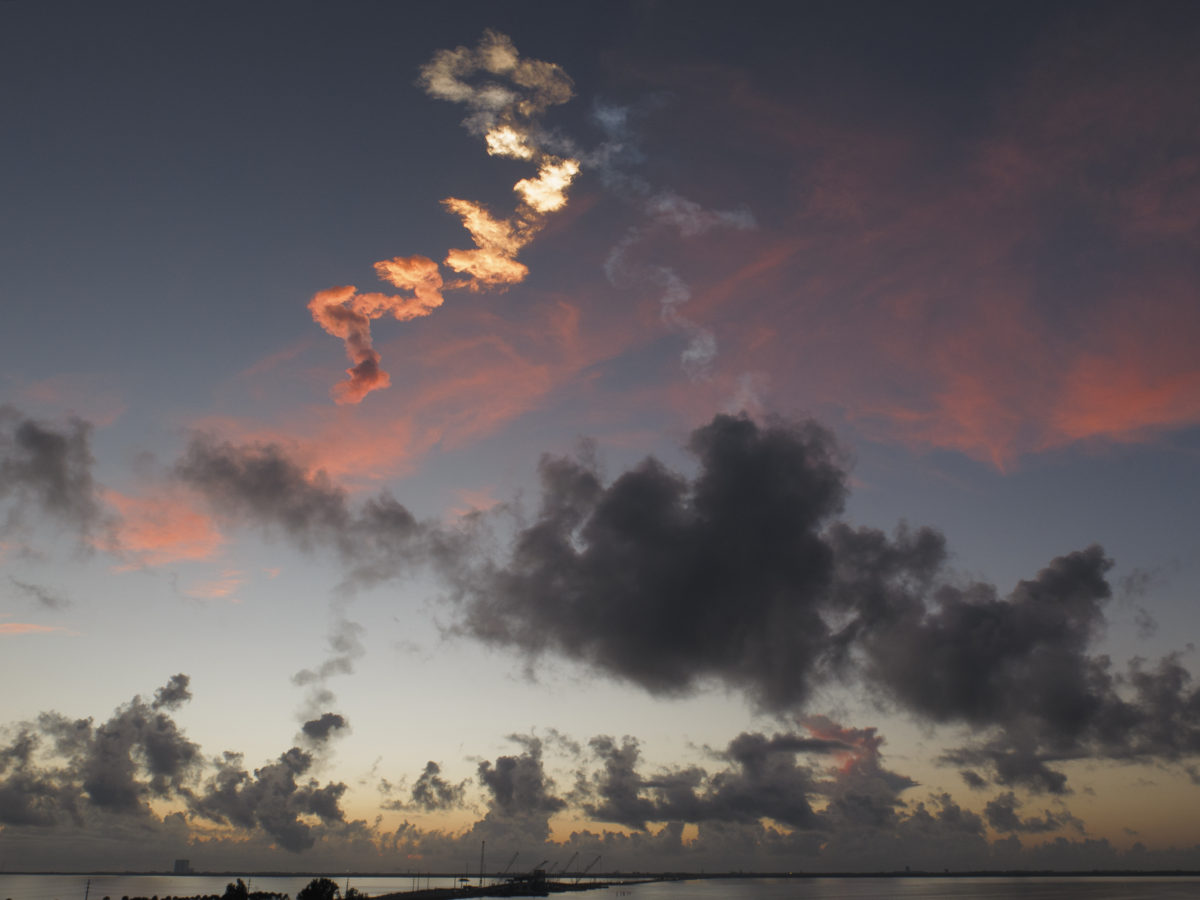
Photography Equipment
With distances of 12-15 miles to all of the launch sites you are going to need some magnification if you want detailed shots. I had good success with lenses in the 500-600mm range. On the other hand a wide angle lens will get you good artistic shots with water reflections and streak shots, although the electric transmission lines in the foreground can present a challenge.
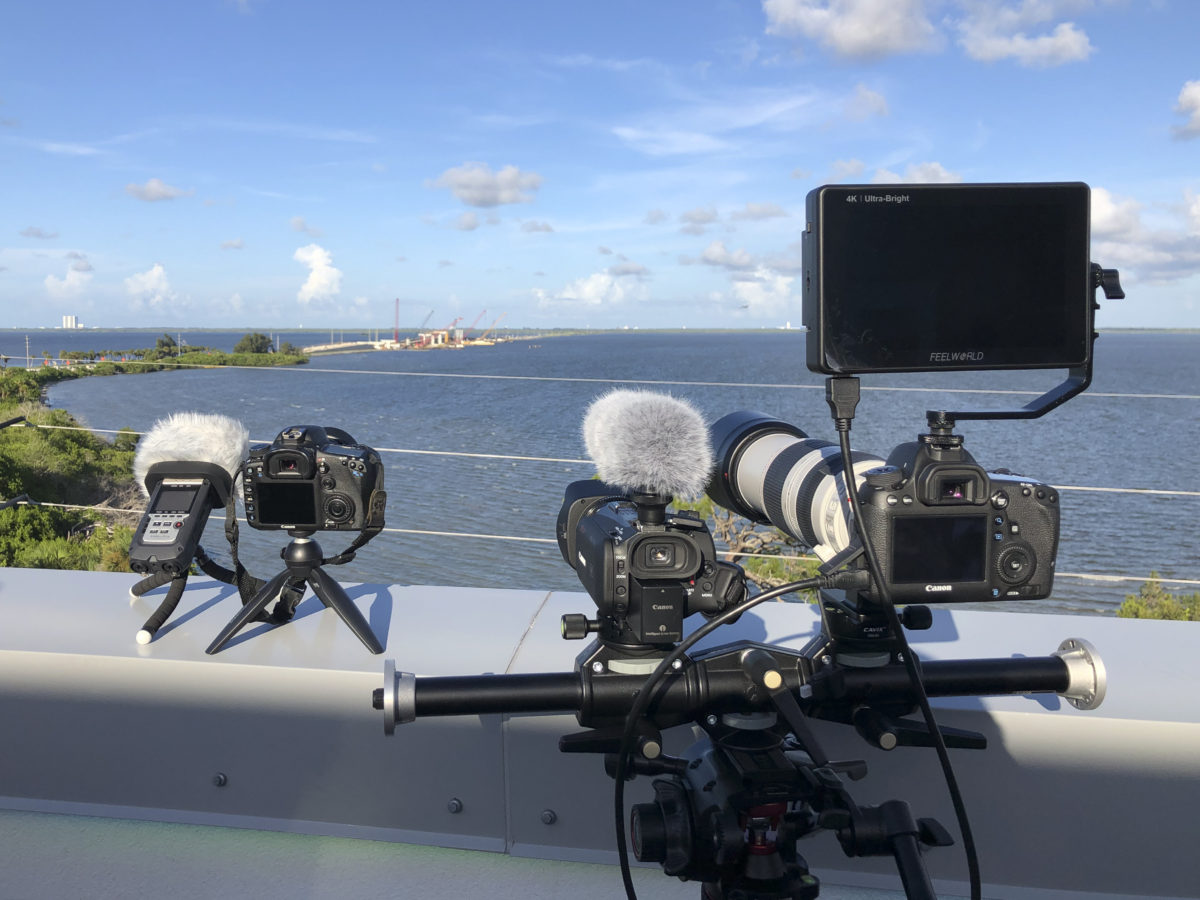
Conclusion
All-in-all I do recommend The Space Bar as a good location for photographing launches. Staying at the hotel offers the biggest advantage – you don’t have to fight traffic for 2-3 hours once a launch is complete to get back to your room. Although you can get closer to and get better photographs of specific launch sites from certain locations (Playalinda Beach, the NASA ticket options for Banana Creek and the LC-39 Gantry, and the Jetty Park area for booster landings), The Space Bar offers great views to nearly all of them and with some decent magnification you can get some good photos.

